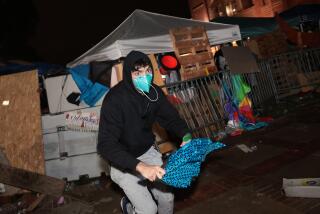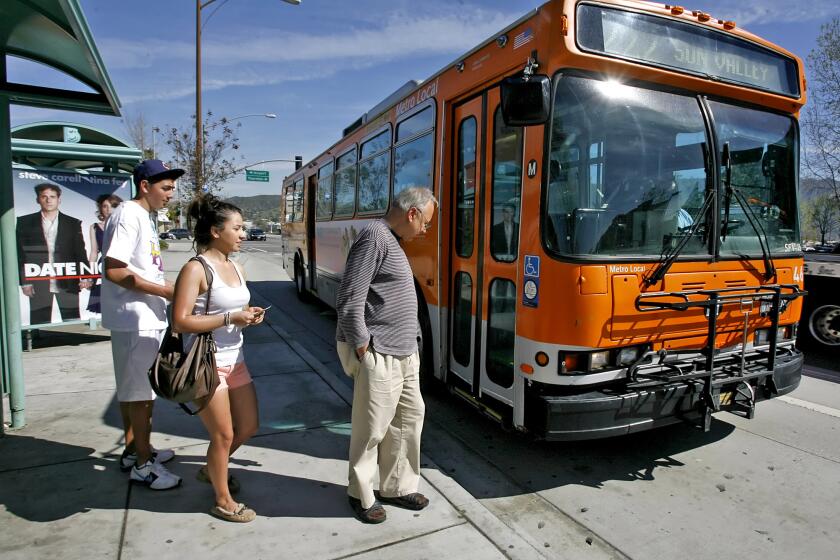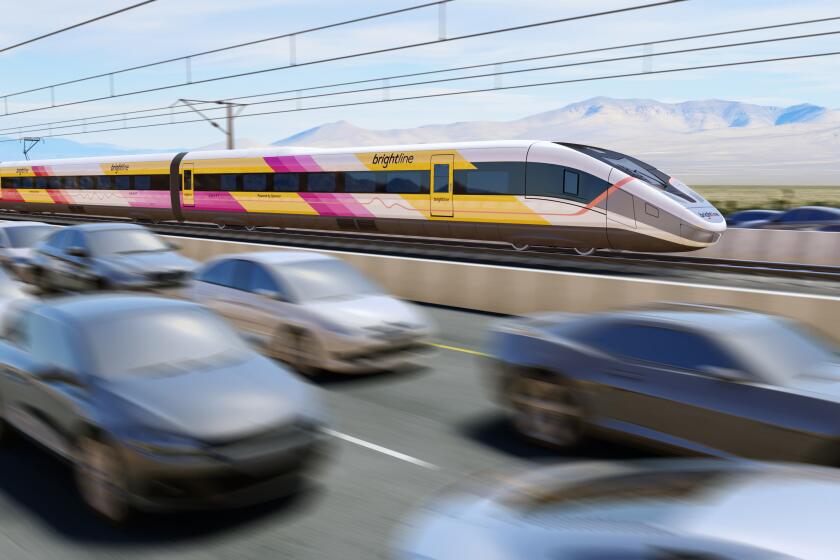Derail Trains and Ding Drivers
To defeat gridlock, Southern Californians must elect better-educated politicians and together accept sometimes-painful solutions.
Like a beautifully wrapped toy train at Christmas, shiny new light-rail projects offer an excuse to cut ribbons. But this symbolic mode of transportation will lead Los Angeles nowhere.
L.A. is too dispersed for a rail system to take most people where they want to go, nor can rail’s relatively low rider capacity influence urban development in significant and desirable ways. Meanwhile, rail’s huge construction costs and operating subsidies divert resources from more suitable transit projects. Advocates of rail transit say it would siphon excess traffic from roads and freeways. But the proportion of travelers riding rail is invariably minuscule, and any increase in freeway speeds is fleeting, as new drivers fill the available space.
The same is true of another perennial favorite among vote-seeking politicians: road building. At first, new boulevards and freeways cut travel time, but as soon as drivers notice the renewed convenience, they’d motor onto the added asphalt and restore congestion. That’s why the main goal of L.A. public transportation should not be to reduce congestion but to provide more mobility. That means supplying transit service to as many people as possible.
For example, L.A.’s small Metro Rapid bus system is speedy, well-managed and attracts riders. It holds the promise of far more extensive service than rail at a fraction of the cost. Planning agencies should extend the system regionwide, keep fares low and give priority to these buses when deciding how to move traffic. As more resources become available, sections of the network could be upgraded to dedicated right-of-way rapid bus transit.
But the only way to dramatically improve traffic flow in Los Angeles is to charge tolls. Ideally, as traffic congestion worsens during the peak hour, transportation agencies will charge higher tolls for road use, with lower fees at other times. This would encourage motorists either to travel at less-congested hours or take routes that cost less.
Singapore has adopted this approach. The government determines the high congestion spots -- on city streets and freeways -- and installs gantries over them. When motorists pass a gantry, “they feel the pain,” a system designer told me. The beep they hear signifies the value of their prepaid toll card falling. Coupled with high auto costs, this pricing scheme has eliminated most congestion in Singapore. Public transportation is available for those who cannot afford cars.
Converting L.A.’s highways into a pay-as-you-go system might seem a political pipe dream. But motorists in many states, including California, already pay freeway and bridge tolls. There are also creative ways to charge for road use without seeming punitive. The high-occupancy-toll lanes on the Riverside Freeway offer motorists an opportunity to escape congestion at a price, which improves overall traffic flow, paid and non-paid. This approach should be extended as much as possible so drivers would have the option of buying a faster trip when they really need it.
Economics teaches that nearly everyone is better off when tolls create freely flowing roads and that a comprehensive, high-quality bus system takes more people to more places at lower subsidy cost. These ideas are harder to grasp than a glamorous rail system.
The challenge for L.A. politicians is to learn the hard concepts, and then change voters’ thinking on how to make the region run more smoothly.
More to Read
Start your day right
Sign up for Essential California for news, features and recommendations from the L.A. Times and beyond in your inbox six days a week.
You may occasionally receive promotional content from the Los Angeles Times.






